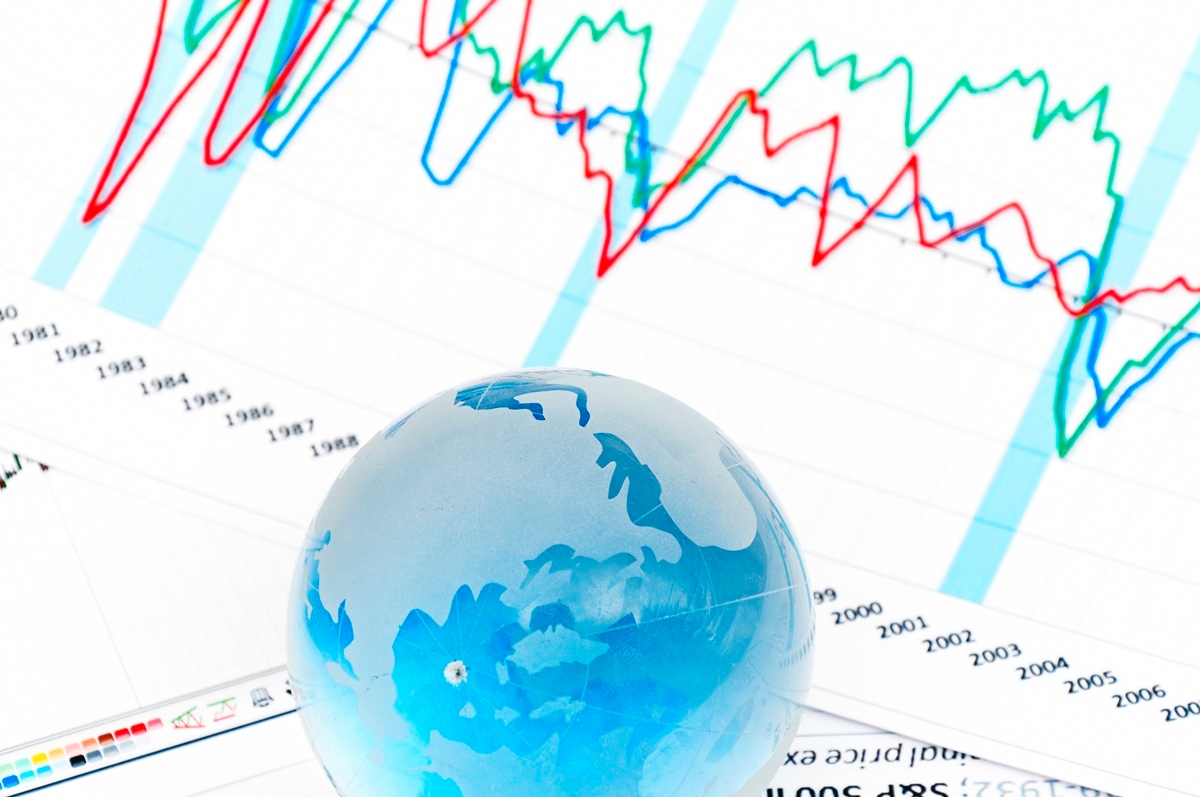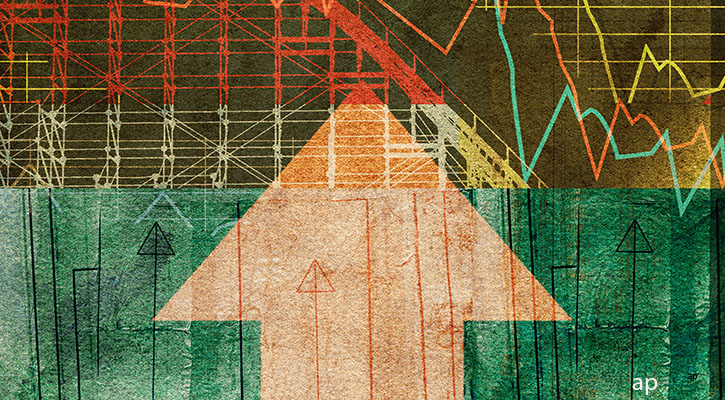
There was plenty of talk of a recession last year, but the rally at the end of 2023 put paid to some of that. According to Morningstar, the rate of economic growth is forecast to slow in 2024, but no recession is anticipated.
Others concur with this view. “With the U.S. economy expanding at a rate of 4.9% in the third quarter, writes a Capital Group study, unemployment under 4% and the U.S. Consumer Price Index down to 3.1% in November, it appears the U.S. Federal Reserve was able to tamp down inflation with rapid interest rate hikes while avoiding a recession.”
However, a slowdown is unlikely to be avoided, as a Morningstar DBRS December report titled North America Macroeconomic Update: Softening Outlook As The Economy Bears The Brunt Of Higher Rates states, “Overall, we expect the full force of tighter monetary and fiscal policies will slow domestic demand and contribute to below-trend growth in 2024, with output growth approaching stall-speed in the first half of the year.”
Despite this, Morningstar DBRS’ view is upbeat. “Private sector balance sheets across both economies are in relatively good shape, the report goes on, and the labor markets, though loosening, remain on a solid footing. These factors underpin the resilience of both economies (U.S. and Canada) and suggest that the expected policy-induced slowdown will be relatively short-lived.”
“According to a composite of the over 700 stocks we cover that trade on U.S. exchanges, as of Dec. 21, 2023, the U.S. equity market was trading at a price/fair value of 1.00, meaning that the market is equal to a composite of our fair value estimates,” said Morningstar’s Dave Sekera.
U.S. Corporate Profits Stem from Cost Cutting
The Wall Street Journal found that in December, while companies were making huge profits, it was not from increased sales, but rather from cost cutting, a behavior apparently inspired by apprehension of an impending recession.
Jared Franz, economist with Capital Group, waves those apprehensions away, saying that damage has been contained within specific sectors. “We have seen some cost cutting, like in technology were there have been many layoffs,” he says. But they were essentially a post-covid normalization, he explains, adding: “We’ve seen pain in housing, in inventory, in demand slowing, but at the same time we see the opposite: labor hording on the part of companies.”
Philip Petursson, Chief investment strategist at IG Wealth Management shares those views. “The recession talk of two years ago never materialized, he recalls, but we’ve had elements of a recession in certain areas like housing, manufacturing, the market downturn; what we have not seen is a labour downturn.”
Key Indicators Are Following a Downward Path
Nevertheless, many indicators are growing darker. “The common view is one of a soft landing, but that’s not the message we’re picking up,” states Alexandra Ducharme, economist at NBC. NBC quotes from the Federal Reserve’s Beige Book, “a resource often overlooked by economists,” notes Jocelyn Paquet, also an economist at NBC. A compendium of 16 indicators that NBC has compiled is clouding over month after month. Most of these indicators “are in their typical pre-recession zone or worse,” notes Ducharme.
Such comments might seem perfectly bland and uninteresting, but to find their equivalent, Paquet points out, “it wasn’t until March 2008 – four months after the start of what would turn out to one of the worst recessions of the century – that the Beige Book painted as bleak a picture as it did in November 2023.”
Paquet finds many other signs of deterioration. For example, the news of an annualized GDP growth of 5.2% in Q3 of 2023 galvanized observers and markets. But at the same time, two other measures of economic growth were much less exhilarating: GDI and GDPlus both advanced only by about 1.2%. And GDI as an advanced indicator of economic downturns, proposed a Federal Reserve study back in 2006, “seems to trump GDP hands down,” Paquet writes.
The Conference Board’s Index of Leading Economic Indicators (LEI) and Coincident Economic Indicators (CEI) are also flashing red, suggesting “that future growth will be much less vigorous than current growth, and historically this has been the case, with recessions almost invariably following periods in which the LEI level deteriorated relative to the CEI.”
As for the job market resilience to which everyone points, it is not a very trustworthy signal, Paquet claims. “Historically, recessions have been much more frequent in the months following periods of low unemployment.” Of course, it’s not the strength of the labour market that leads to recessions, but too often the Fed’s reaction to that strength: it raises its rates until employment and other factors snap. Note that an increasing number of observers are predicting another rate hike.
Meanwhile, three other employment-related indicators are flashing red: temporary help services are declining along with consumer confidence, while the Bureau of Labor employment diffusion index stood at 60.4% in November, barely above the 60% threshold which has historically given way, six months later, to a recession.
NBC is not the only bank listing red alerts. A recent study by CIBC reports “the decline in consumer spending since 2022 is already approaching levels consistent with prior recessions, and further weakness is expected during the first half of this year.”
Timing the Impact of the Rate Increase is Key
The key factor underlying all analyses of an ongoing soft landing or of an impending recession is the impact on the economy of the rapid ramp up of interest rates. The last time as strong a rise occurred is in the 2004-2006 period, when Federal Reserve chairman Alan Greenspan increased the funds rate to a peak of 5.25% in July 2006, 13 months before the crisis hit its full stride with the fall of Lehman Brothers. “The Greenspan script will repeat itself,” predicts Stéfane Marion, chief economist and strategist at NBC.
Franz disagrees with Marion’s timing. “Academic literature looks from the beginning of the rate hikes, and from there it usually takes 12 to 24 months for their full impact to be felt,” he says. But on that reading, the 2008 crisis happened four years after the beginning of the Greenspan hike. Marion reads the impact 12 to 18 months after the rate hikes have peaked, which is only six months ago. If he is correct, rates still have another year to wreak their havoc.
However, the damage high rates inflict depends on the fragility of the terrain they land on, points out Petursson. “What you want to look for is the stresses in the economy, not just the rates per se. Greenspan’s rates hurt because there was a bubble in housing,” he says, a bubble that was propped up by overwhelming leverage in the financial sector “I don’t see that bubble today, he continues, certainly not in Canada. Yes, prices are high, but aren’t speculative.”
Petursson doesn’t rule out the possibility of a recession, but he’s wary of forecasts. Rightly so if we believe the Capital Group study which points out that 85% of economists in a December 2022 survey predicted that a recession would happen in 2023 or earlier, while only 15% claimed that it would be in 2024. Now in another survey, 63% say that a recession will happen only in 2025 or later, while only 35% say that it could be in 2024. The majority has certainly been wrong, but that doesn’t necessarily mean that the minority – where NBC stands – is right.









:quality(80)/cloudfront-us-east-1.images.arcpublishing.com/morningstar/G3DCA6SF2FAR5PKHPEXOIB6CWQ.jpg)










